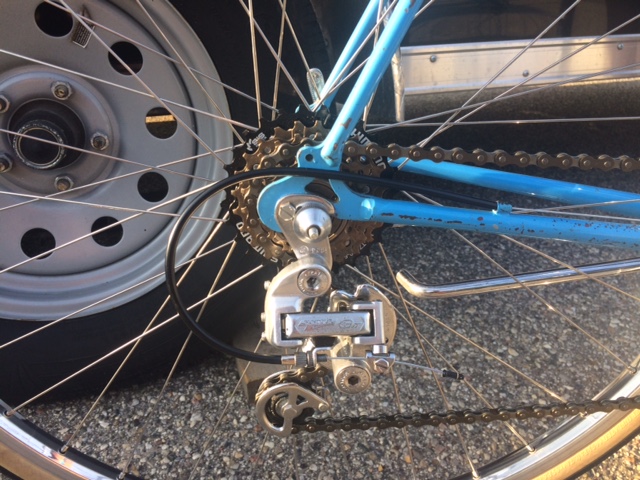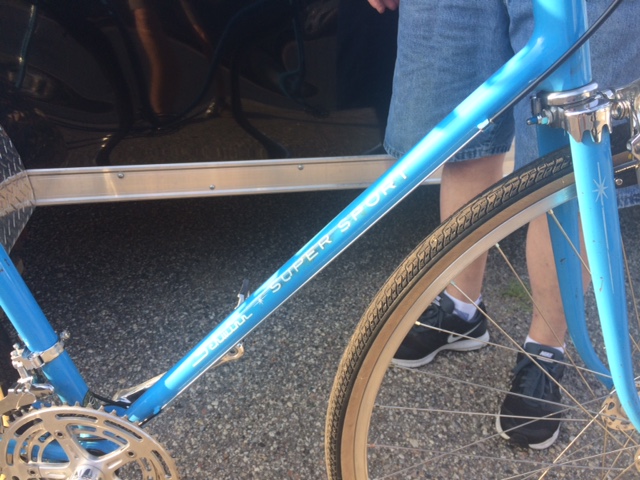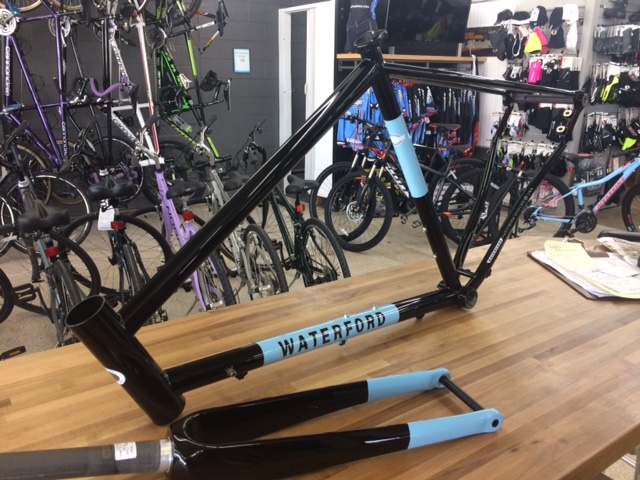Mark brought in this family treasure a few weeks ago, and said he was either going to buy a new bike, or build this one into something he could ride regularly. Well, we love seeing old classics like this restored, and better yet, ridden. So, here you are:

Mark is pretty capable himself, so he tore the bike down and did all the polishing work himself. The first change he wanted to make was to get rid of the one piece steel crank – he quickly discovered there are nice parts from Wheels Manufacturing to convert an old one piece style bottom bracket to accept a modern euro bottom bracket. he also tore down the wheels and rebuilt the hubs.
The cones in the Schwinn Approved Mallard hubs were damaged, which is pretty common, so we found a set of used small flange hubs on eBay and bought them for the parts. As you can see Mark polished them up beautifully. We had the Wheel Department at Velocity build the wheels, because we’re a bike shop, and it’s June. Jeff Jacobi took the extra time to build the wheels as Schwinn would have – aligning the spokes so there are no old spoke marks to see on the hub. The rims are Sun CR18 rims, good double wall rims that looks the part – and polished of course, because Mark.
Once the wheels were done, Mark installed some Panaracer Pasela tires and a 6 speed freewheel, yes 6, we realize it would have come with 5, but why wouldn’t you make it 6 if you can, I mean, his intent is to ride this bike. At that time we helped him select a bottom bracket to set a good chain line.
We replaced the original brakes with some TRP side pulls just to add stopping confidence. Mark polished up the original stem, bar, seatpost and clamp. He bought some Brooks Proofide to recondition the Brooks saddle as well, it’s quite comfortable.
As he was reassembling the bike, Mark found the derailleurs were a little bent and didn’t move real well. Again, a quick search on eBay brought a “lightly used” Suntour GT rear derailleur, and a NOS Suntour Sprint front derailleur. The front derailleur came in the packaging with the instructions on how to properly install and adjust it, as well as the instructions for the GT rear derailleur! Mark says he tore apart the rear derailleur to clean and lubricate it, but he’s convinced it’s never been ridden, the pivots are tighter than some modern derailleurs I’ve worked with. Mark installed the derailleurs, cabled the bike and brought it in for a chain installation and derailleur adjustment.

One of his last steps involved polishing the frame. This step can damage a nice old bike if you’re not careful. Mark was gentle enough that he didn’t remove much paint and really brought the blue back as well as removed a lot of discoloration in the decals.

Mark was nice enough to let me take it for a spin, in fact I think I rode it before he did. I have to say, it’s made me consider building an old Schwinn that I can ride.
Mark, it was an honor. Thank you. Brian Walquist.




















 via facebook
via facebook




You must be logged in to post a comment.